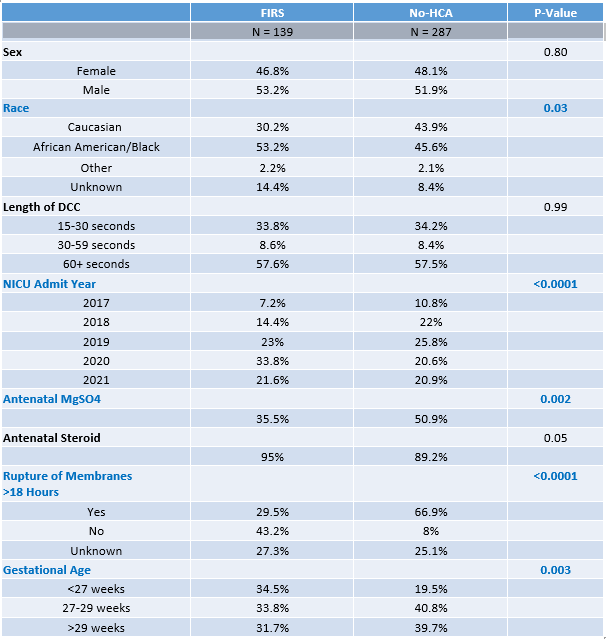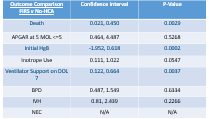Neonatal General
Neonatal General 7: NICU Practices 1
167 - The Impact of Delayed Cord Clamping on Neonatal Outcomes Following Fetal Chorioamnionitis
Publication Number: 167.331

Claire D. Murray, DO (she/her/hers)
Neonatologist
SSM Cardinal Glennon Children's Medical Center
St Louis, Missouri, United States
Presenting Author(s)
Background:
Delayed cord clamping (DCC) is shown to improve certain outcomes in preterm infants and is now the standard of care for all vigorous infants. Little is known about perinatal factors that modify effectiveness of DCC in premature infants. Specifically, premature infants exposed to fetal histologic chorioamnionitis (FIR-HCA), a severe progression of the placental inflammatory response which is known to have significant impacts on neonatal outcomes, may have a blunted response to the protective effects of DCC.
Objective: To evaluate the impact of fetal histologic chorioamnionitis (FIR-HCA) on outcomes related to delayed cord clamping (DCC) in premature infants.
Design/Methods: In this retrospective, case-control study, premature infants < 32 weeks who underwent DCC were grouped into exposed to FIR-HCA or not-exposed to any HCA. The primary outcome was difference in mortality between the cohorts, while secondary outcomes included admission hemoglobin, intraventricular hemorrhage (IVH), use of inotropes, need for invasive ventilation and diagnosis of bronchopulmonary dysplasia (BPD).
Results: 426 infants were included (FIR-HCA n= 139), (no-HCA n= 287). Demographic factors were similar between groups. Premature infants who were exposed to FIR-HCA had a reduced risk of mortality, lower initial hemoglobin and lower need for invasive ventilation compared to premature infants who were not exposed to HCA without significant differences in the other outcomes.
Conclusion(s):
In premature infants who receive DCC, exposure to FIR-HCA is associated with reduced risk of mortality compared to infants who are not exposed to HCA.

